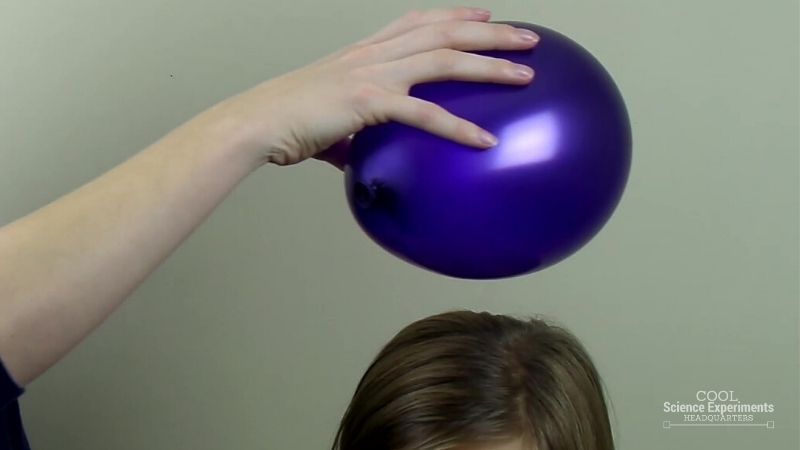Eeek! Charge it up and make your hair stand on end! This is a fun and easy experiment for kids, especially if they’ve never seen it before.
Kids can explore static electricity while having a great time with science. A demonstration video and printable instructions are included as well as an easy explanation of how this experiment works.
JUMP TO SECTION: Instructions | Video Tutorial | How it Works | Purchase Lab Kit
Supplies Needed
Static Electricity Science Lab Kit – Only $5
Use our easy Static Electricity Science Lab Kit to grab your students’ attention without the stress of planning!
It’s everything you need to make science easy for teachers and fun for students — using inexpensive materials you probably already have in your storage closet!
Make Your Hair Stand on End Science Experiment Instructions
Step 1 – Begin the experiment by blowing up the balloon. Then take a moment to make some observations. Is there anything special about the balloon? What if we move the balloon toward your hair, do you think anything will happen? Write down your hypothesis (prediction) and then test to see if you were right!

Step 2 – Wave the balloon about 2-3 inches above your head. Does anything happen? No, the hair stays in place. Was your hypothesis correct?

Step 3 – Let’s take it a step further. Rub the balloon back and forth on a sweater or t-shirt for 5 to 10 seconds. Then make some more observations. Does it look like there is anything different about the balloon? Do you think anything different will happen if we move the balloon toward your hair? Write down your hypothesis (prediction) and then test to see if you were right!

Step 4 – Wave the balloon about 2-3 inches above your head again. Does anything happen this time? Was your hypothesis correct? Wondering what caused your hair to move? Find out the answer in the how does this experiment work section below.
Make Your Hair Stand On End Science Experiment Video Tutorial
Watch the How to Make Your Hair Stand on End Science Experiment Step by Step Instructions
How Does the Science Experiment Work?
Most objects do not have a positive or negative charge, they are neutral. Some objects, like balloons, have the ability to become charged. At the beginning of the experiment, when you wave the balloon over the person’s hair, the uncharged (neutral) balloon does not attract the person’s hair.
By rubbing the balloon on your shirt, you are giving it an electrical charge. Rubbing the balloon allows electrons from your shirt to move onto the balloon. This gaining of electrons gives the balloon an overall negative charge. When you wave the balloon over the person’s hair now, it stands on end. This is because the negative charges of the balloon attract the positive charges of the person’s hair. Unlike electric charges attract each other.
The outcome of this experiment is a result of static electricity.
Static electricity is a stationary (not moving) electric charge that is caused by friction.
Science Fun Fact: Did you know that lighting in the sky is a result of static electricity?
Static Electricity Science Lab Kit – Only $5
Use our easy Static Electricity Science Lab Kit to grab your students’ attention without the stress of planning!
It’s everything you need to make science easy for teachers and fun for students — using inexpensive materials you probably already have in your storage closet!
I hope you enjoyed the experiment. Here are some printable instructions:

How to Make Your Hair Stand On End
Materials
- Balloon
- Sweater or T-shirt
- Someone with Long Hair (preferably without hair spray or styling product in it)
Instructions
- Begin by blowing up a balloon. Wave the balloon about 2-3 inches above the persons head to show them that nothing happens.
- Next, rub the balloon back and forth on a sweater or t-shirt. Do this for 5-10 seconds.
- Now wave the balloon about 2-3 inches above the persons head, and watch what happens this time?



Leave a Reply